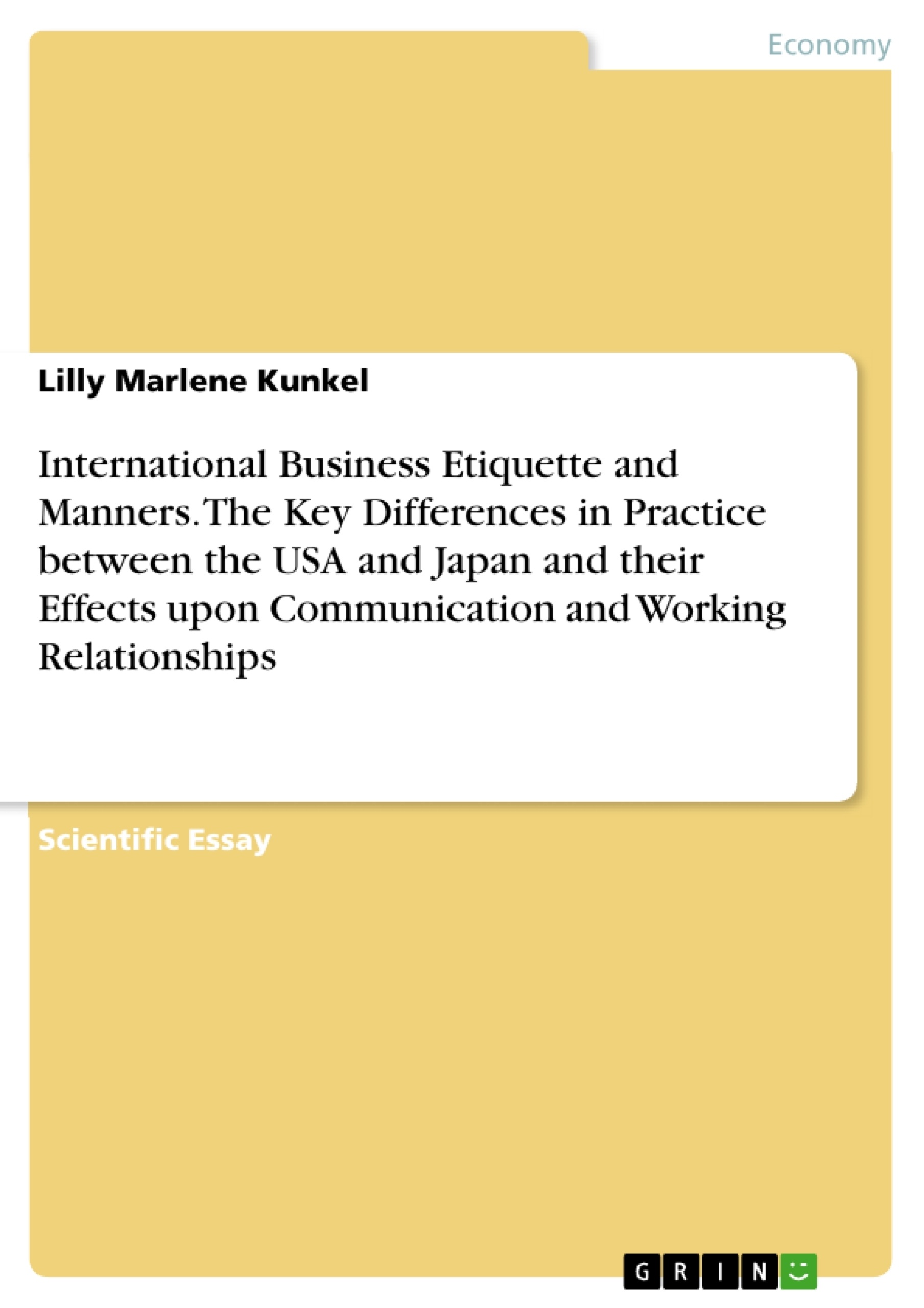This paper deals with the cultural differences between the USA and Japan. It gives an overview of Japan’s form of state, economy and culture, illustrates the most important things to consider in business meetings between these nationalities and provides recommendations for correct behaviour in a US-Japanese business environment.
Table of Contents
:- Introduction
- Overview of Form of State, Economy and Culture in Japan
- Hofstede's Dimensions: USA vs. Japan
- Individualism
- Masculinity
- Power Distance
- Uncertainty Avoidance
- Long-term Orientation
- Considerations before, during and after an American-Japanese Business Meeting
- Pre-departure
- The First Personal Contact
- During the Meeting
- After the Meeting
- Conclusion
- Recommendations
Objectives and Key Themes
: This paper aims to explore the cultural differences between the USA and Japan in the context of business interactions. The paper examines the implications of these differences on communication and working relationships. The key themes explored are:- Cultural differences between the USA and Japan
- Impact of cultural differences on business meetings
- Recommendations for effective communication and working relationships in a US-Japanese business environment
- Application of Hofstede's cultural dimensions to analyze differences between the USA and Japan
- Importance of cultural awareness and sensitivity in international business interactions
Chapter Summaries
:- Introduction: The chapter introduces the topic of cultural differences between the USA and Japan in the context of business interactions. It highlights the importance of understanding these differences to foster effective communication and working relationships.
- Overview of Form of State, Economy and Culture in Japan: This chapter provides an overview of Japan's political, economic, and cultural landscape, emphasizing aspects relevant to business interactions with Americans.
- Hofstede's Dimensions: USA vs. Japan: This chapter analyzes the differences between the USA and Japan using Hofstede's cultural dimensions. It examines how the dimensions of individualism, masculinity, power distance, uncertainty avoidance, and long-term orientation impact business practices in both countries.
- Considerations before, during and after an American-Japanese Business Meeting: This chapter offers practical advice on how to navigate business meetings between Americans and Japanese. It covers aspects such as pre-departure preparation, initial contact, meeting conduct, and post-meeting follow-up.
Keywords
: This paper focuses on the key areas of cultural differences, international business etiquette, communication, and working relationships. It explores the impact of cultural dimensions such as individualism, power distance, and uncertainty avoidance on business interactions between the USA and Japan. Additionally, the paper utilizes the framework of Hofstede's cultural dimensions and provides practical recommendations for fostering effective cross-cultural communication and collaboration in a US-Japanese business environment.
Fin de l'extrait de 16 pages
- haut de page
- Citation du texte
- Lilly Marlene Kunkel (Auteur), 2008, International Business Etiquette and Manners. The Key Differences in Practice between the USA and Japan and their Effects upon Communication and Working Relationships, Munich, GRIN Verlag, https://www.grin.com/document/140518
Lire l'ebook



